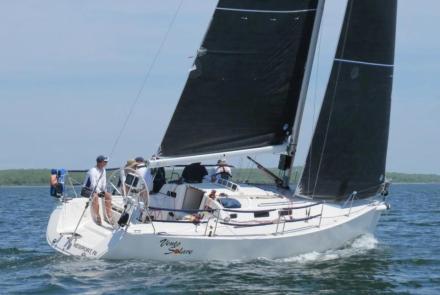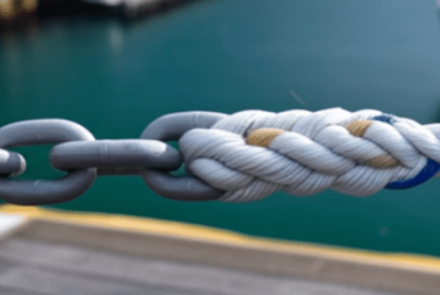The Vestas Wind Grounding on Cargados Carajos Shoal
On the night of November 29, 2014, while competing in the second leg of the Volvo Ocean Race, Vestas Wind ran aground on Cargados Carajos Shoal shortly after local sunset. The crew consisted of eight seasoned professional sailors with multiple Volvo Ocean Races in their past; the vessel was essentially new and in perfect condition; the visibility was excellent except for lack of moonlight; and the shoal was charted on virtually every paper chart of the west Indian Ocean from extremely small scale 1:45 million charts to an extremely detailed 1:75,000 chart. In addition, various electronic charts had the shoal shown correctly geo-referenced, which is frequently not the case with isolated landmasses in remote parts of the globe.
So… how could this happen on a boat with excellent electronic navigation gear and a professional crew?
In the process of collecting information from which they would write the report, the investigators interviewed approximately 20 individuals, many of whom were sailors in the fleet of seven VO 65 sailboats, and others who were directly involved in the organization and management of the race. Some of the possible causes of the accident that were suggested included:
- A very hurried schedule in the previous stopover port, including mandatory events for the crews.
- A last minute “East African Exclusion Zone” change that allowed sailing in the vicinity of Cargados Carajos Shoal whereas it had been “off limits” prior to the change.
- A general lack of sleep and overall fatigue based on the size and complexity of the boat compared to the number of crew.
- A short amount of time between the launch of Vestas Wind and selection of the crew prior to the start of the race compared to most of the other teams.
- High degree of reliance on the navigator to make all navigation decisions while the skipper focused on getting the most out of the boat in all conditions.
- The team’s lack of the use of a professional navigator as a consultant during the stopover in South Africa.
The report team determined that many of these issues were shared by most of the other teams in the race, and were not directly responsible for the accident. The report team instead focused on two causes that were responsible:
- The crew was completely unaware of the danger posed by Cargados Carajos Shoals. Based on his understanding of the electronic charts of the area, the navigator believed the shoals to be covered by 40m of water, or more, and therefore anticipated a seastate change but not a risk of collision.
- The electronic navigation charts in use on the boat failed to correctly show the Cargados Carajos Shoals at several common zoom levels. As the chart scale was changed, there were many representations of the shoal that made it appear to an area of shallow water, but no land or drying areas are shown.
- A related issue was the lack of a “dongle” to allow one of the two computers to use the detailed charts from C-Map. These small pieces of hardware connect to the computer so that regions can be “unlocked” and used for navigation. While the performance and navigation computer had a dongle for the local charts, the more commonly used routing computer did not, and therefore had to use small scale planning charts instead.
In one sense, the skipper and navigator were lulled into a sense of safety
In one sense, the skipper and navigator were lulled into a sense of safety because they were convinced, for several days prior to running aground, that the shoal was not a hazard to navigation. They were completely unaware that they were sailing towards a shoal that was over 24NM across, in the dark, at speeds over 17 knots.
The goal of the report team was to not lay blame on any individual, but to find the facts that resulted in the accident and to make suggestions that might prevent a similar accident in the future. The report contains an annexure of Recommended Guidelines for Passage Planning to serve as a comprehensive guide for racing and cruising sailors, and as well as those who voyage under power.
One final point: many people have suggested that the grounding of Vestas Wind proves that paper charts are more reliable than electronic, or that one brand of electronic chart is superior, or that electronic charts from national hydrographic offices are necessarily superior. The truth is that all charts contain errors: either of omission, or geo-referencing, or currency, or of presentation. Certain providers of charts have superior products in some areas of the world, and not in others. It is always incumbent on the navigator to use whatever means are available to him or her, and to investigate discrepancies with great care so as not to put the crew and vessel in danger.
Find the full report here.




